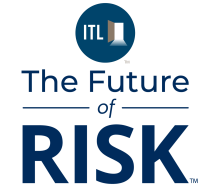Only tax evasion exceeds insurance fraud on the list of most costly white-collar crimes in the U.S. In fact, 10% of insurance claims are fraudulent, and the problem is only growing.
TransUnion says suspected digital fraud attempts surged 80% globally from 2019 to 2022, and generative AI heightens the problem. It lets bad actors manipulate or even make up evidence such as photos and lets them create synthetic identities (combining real and fake personal information).
But generative AI is turning out to be much more of a blessing than a curse, mostly because it so greatly expands the amount of information an insurer can evaluate for signs of fraud, according to a recent report by Deloitte. Unstructured information such as handwritten notes, photos (including their metadata), videos, phone calls and sensor data can all be scanned for inconsistencies and key words or patterns that suggest fraud.
By 2032, Deloitte says, P&C insurers could save between $80 billion and $160 billion a year on fraudulent claims — if they take the right approach.
Here are Deloitte's key recommendations for how to save loads of money on fraud.
The Deloitte report says soft fraud — when a claimant exaggerates a loss — accounts for 60% of fraud and is only caught 20% to 40% of the time. Hard fraud — when someone stages a loss or simply makes it up — accounts for the remaining 40% of fraud and is caught more often, between 40% and 80% of the time.
Improving on detection won't come cheap. Deloitte expects insurers to be spending $32 billion on fraud detection technology by 2032 — but says they could then reduce fraud by between 20% and 40%, more than making up for the technology's hefty expense.
Deloitte lists these techniques as key to fraud detection, while emphasizing the need to combine multiple approaches:
- "Text analytics. Natural language processing analyzes textual data of claims forms, emails, and social media posts to identify keywords and entities....
- Audio-image-video analysis. Speech recognition and sentiment analysis can examine customer calls for signs of duress.... Photo analytics can uncover irregularities in metadata, manipulation, and repeated use. Causation analytics can identify if alleged injuries were likely consistent with the experienced accident. Video analytics can verify the occurrence and extent of damage, identify authenticity of images, and highlight signs of tampering or staging.
- Geospatial analysis. Satellite images and comprehensive 3D drone footage can verify the extent and location of damage that may not be clearly visible in physical inspections....
- Internet of Things data. Real-time surveillance devices like vehicle telematics can reconstruct accidents and verify the legitimacy of claims. Smart home sensors like water leak detectors and security cameras can help gather evidence that can be used to verify claims and detect fraudulent or staged activities.
- Simulation models. Replicating the behavior of medical providers, repair shops, and others that individuals may work with under different scenarios in a controlled virtual environment can identify patterns and deviations from standard industry practices and detect instances such as overbilling, unnecessary services, and coordinated activities or probable collision rings between entities."
Every honest customer hates fraud, because we all know it's raising prices for the rest of us. Customers are surely even more sensitive about the issue now, given that premiums have risen sharply for a couple of years and that Trump's tariffs are starting to reignite inflation for cars, car parts and materials that insurers use to repair or replace homes.
So insurers will not only cut costs but be applauded by customers for doing so. Let's do it.
Cheers,
Paul


